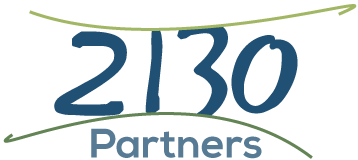 I had a further conversation with Dan Markovitz of TimeBack Management yesterday regarding Lean Conversations and how to begin designing a rigorous assessment instrument. The objective being to give users a way to focus their actions on the most effective leverage points for reducing friction and waste in their everyday conversations and increasing productivity and effectiveness. Dan had recently returned from a major annual Lean conference by the Lean Enterprise Institute One of his observations was that there is a fair degree of frustration in the community around “why haven’t we seen more progress over the last decade than we have?”
While not pretending to have any global answers to this question, I believe a significant portion of the issue likely comes from the paradigm in which the work has been done. Here's what I mean:
I had a further conversation with Dan Markovitz of TimeBack Management yesterday regarding Lean Conversations and how to begin designing a rigorous assessment instrument. The objective being to give users a way to focus their actions on the most effective leverage points for reducing friction and waste in their everyday conversations and increasing productivity and effectiveness. Dan had recently returned from a major annual Lean conference by the Lean Enterprise Institute One of his observations was that there is a fair degree of frustration in the community around “why haven’t we seen more progress over the last decade than we have?”
While not pretending to have any global answers to this question, I believe a significant portion of the issue likely comes from the paradigm in which the work has been done. Here's what I mean:
1) Most of the "Lean work" in the United States has dealt with the physical and financial dimensions of productivity; with much less attention to specific interventions in the way people think and interact with those around them, (what we are talking about when we say “the human dimension.”) If you change processes, physical environment, and finances you also need to give people a new "operational paradigm" for how to upgrade their interactions with each other.
2) Much of the work around Lean is reported and exchanged in relatively academic terms, almost "theroretical," but "the action" goes on between people on the shop floor, in their offices, on the phone and now with email and text messaging. It's real life experience which tends to get messy.
3) Generally writings and discussions address how to get other people to change their behaviors. From the perspective of the work we do at 2130, it all really starts with “Self Generated Accountability.” This means the starting point is understanding "my role" in what is happening and taking responsibility for the changes I need to make. Self-observation, self-awareness and incorporating feedback from others is key. This is very different than looking at the team and consistently providing feedback to them about the changes they need to make. It doesn't mean that if you are a leader you don't make assessments of others, but it does mean you start with yourself first.
4) Working with the effectiveness of our conversations and interactions involves working with things we can’t see or touch. Furthermore, the nature of conversations is much different than that of physical objects. Brian Regnier taught me the crucial difference, which is that physical objects persist whereas conversations disappear. The fact that many of us treat conversations as if they also persist leads to many failings in shifting thinking.
 5) There are few best practices for conversations that lead to highly productive interactions. For example, it’s easy to observe a group of people behaving in a continuous "fire-fighting" mode and we have a term for it. It’s less clear in every day shared language what the descriptor is for highly productive group interactions.
5) There are few best practices for conversations that lead to highly productive interactions. For example, it’s easy to observe a group of people behaving in a continuous "fire-fighting" mode and we have a term for it. It’s less clear in every day shared language what the descriptor is for highly productive group interactions.
6) For many of us, any attempts to increase the effectiveness and productivity of our interactions starts with a complaint about the way that it is and attempts to fix it. Our approach is to learn to describe the “Yonder Star” or ideal outcome. What would our interactions and work together look like if we were performing at a very high level and enjoying ourselves to boot?
Our invitation to you is to reframe your thinking about those interactions you have that involve a lot of friction and waste. Create your Yonder Star for the conversation. Invite the other(s) to share your Yonder Star, examine what’s missing from that picture today, and engage in discovering new practices or ways to interact that are more productive. Let us know where you get stuck, what you learn, and any results you are having. If you come up with any best practice statements that are “Lean Conversations,” by all means, please share them.
